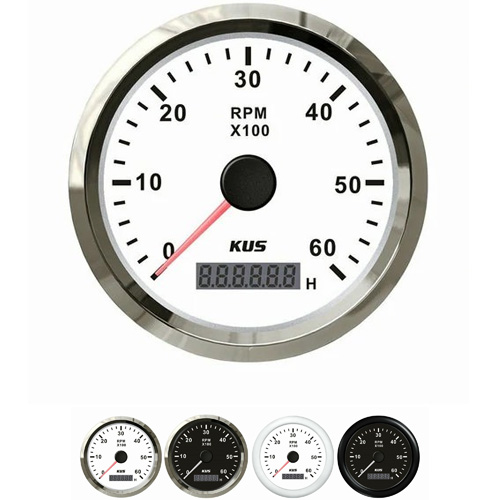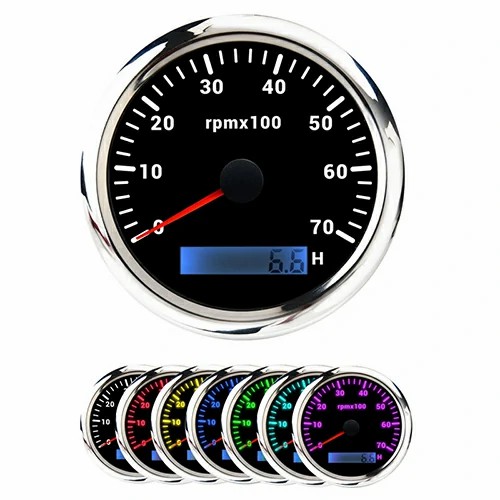how to test a tachometer on a boat
With the rapid development of electronically controlled diesel engine technology and the wide application of computer digital technology, for EFI diesel engine without camshaft, the speed signal of main engine has been improved from speed measurement to accurate measurement of crank angle. The tachometer or mechanical parts of some old boat have reached the aging period and need to be updated Therefore, it is very important to develop a set of main engine speed signal measurement and conversion system and accurate measurement system of crank angle, especially the system that can accurately measure the crank angle of main engine in static state.
At present, the main methods of host speed measurement are:
(1) the most common method of electromagnetic pulse measurement is to measure the pulse signal from the gear at the flywheel end, generate the pulse signal by using the change of the gap between the sensor and the gear, and obtain the speed signal output after shaping, comparing with the clock frequency and counting;
(2) Photoelectric pulse measurement photoelectric sensors or photoelectric encoders are mostly installed at the camshaft or on the output shaft of the governor;
(3) The voltage measurement of the main shaft tachogenerator is the main method for measuring the speed of the main engine of old boat. It is generally installed on the sprocket of the main shaft, connected with the tachogenerator through the chain, and the tachogenerator outputs the voltage signal At present, most boat measure the pulse signal from the gear at the flywheel end, which has the advantages of convenient installation and easy management. However, the position of the flywheel is low and is very vulnerable to the pollution of bilge water. Only by using electromagnetic pulse measurement can the influence and interference of the signal be minimized. From the results of use on board, the position perpendicular to about 45 ° above the flywheel is better and the installation is more convenient.
In addition, the timing of the electronic cylinder oiling device is based on the feedback signal of the tachometer of the crankshaft speed, and the motion signal of the piston is fed back to the oiling device through the sensor to inject lubricating oil into the cylinder when the piston is in the most appropriate position (such as when the first piston ring passes through the spray hole) According to the demand, the oil filling quantity can be adjusted automatically or manually according to the working condition of the diesel engine Using photoelectric encoder to measure the static position is a good method, but in the fully electronically controlled diesel engine without camshaft, the output shaft installed at the free end needs to be considered.
 English
English 



Get a Quote / Info